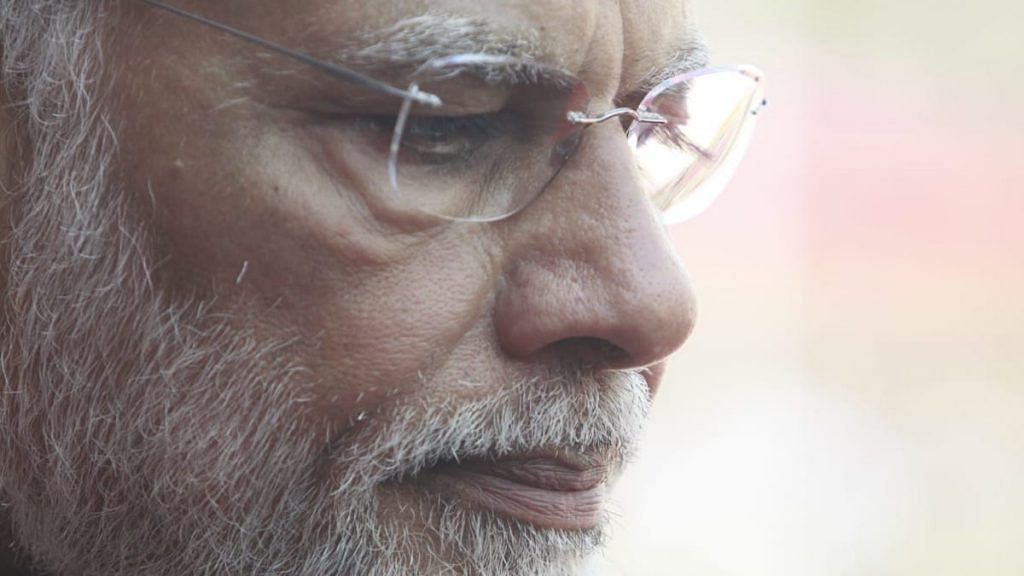From chaiwala to chowkidar to Mr Closure, who can sew up all the open wounds of independent India – PM Narendra Modi has morphed into a new avatar in 2019. From Kashmir to Ayodhya, Modi is projecting himself as Problem Solver No 1— a leader who corrects historical wrongs, resolves the problems left by the previous Congress governments and even Jawaharlal Nehru.
In 2014, Narendra Modi was the new ray of hope, the chaiwala (tea seller) who made it big. In 2019, he was the great ‘protector’, the chowkidar. By 2024, Modi will be ‘Mr Closure’ – the man who has ‘managed to close’ some of the many painfully tangled issues of modern history. If previous BJP governments were known for the history-rewriting Hindutva project, Modi’s government goes one step further. He also ‘rights’ history’s wrongs.
From diluting Article 370 in Jammu and Kashmir, to updating the National Register of Citizens (NRC) in Assam, opening up the Kartarpur corridor and of course, ensuring an end to the Ayodhya title dispute – Modi wants to prove that he has brought an end to long-due demands in less than six months of coming back to power. Incidentally (or not), all the issues being completely in sync with the Bharatiya Janata Party’s worldview.
Never mind that the closing of some of these issues may not have much to do with the Prime Minister’s efforts at all, but the BJP hit a jackpot with the timings.
Also read: Modi govt begins consultations to form Ram Temple Trust, politicians to be kept out of it
Re-inventing his image
Modi has constantly believed in refurbishing his image, adding a dash of newness to appeal to the voters and finding a new election peg.
So, ahead of the 2014 Lok Sabha elections, Modi stood for hope, aspirations and progress for all with his ‘Sabka Saath, Sabka Vikas‘ promise. He was, after all, a chaiwala once.
In the 2019 elections, Narendra Modi became the ‘chowkidar‘ – the watchman who can protect India and take care of its citizens.
In politics, every strategy – as clever as it might be – runs its course, and Modi is way too crafty to not realise that. He now knows he needs to prove he can ‘solve’ knotty issues no one else has been able to.
The recent assembly elections in Maharashtra and Haryana have shown the BJP’s limitations. Modi knows he cannot allow his wave to crash, and the only way to do that is by acquiring a fresh tag.
Also read: Why and how ideology is central to winning elections in India
Master of closures
Consider this pattern. On 5 August, just a little over two months after coming to power, the Narendra Modi government caught the country unawares with its decision to scrap the special status of Jammu and Kashmir through Article 370. In one stroke, Modi appeared to end a decades-long dispute and fulfill his party’s promise of ‘Akhand Bharat‘. Of course, who cares that his government’s handling of the issue has been beyond disastrous, keeping the entire state under an unprecedented lockdown.
The end of August saw the final list of Assam’s updated NRC being published – leaving out 19 lakh people. Two things make this interesting. One, the implementation of the NRC has little to do with the BJP – it has been an entirely Supreme Court-monitored exercise, which actually began in 2015 when the Congress was in power in the state. Two, the final outcome was far from what the BJP wanted, with lakhs of Hindus being left out.
And yet, nothing stops Modi from claiming credit for wrapping up this exercise and identifying ‘infiltrators’. It is he who is the messiah of Assam. Of course, for any ‘flaws’ in the final list, only former NRC coordinator Prateek Hajela and his team are to blame.
A bit like the NRC, the opening up of the Kartarpur corridor – which allows Indian pilgrims to visit Kartarpur Sahib gurdwara in Pakistan – is not entirely to this government’s credit. The issue was also taken up by former Prime Ministers Atal Bihari Vajpayee and Manmohan Singh. Although the work was completed under the Modi government and with impressive speed. With the grand opening ceremony last Saturday, Modi in a grand saffron turban achieved the optics he needed.
And of course, the Ayodhya verdict brings in the latest, and the most crucial, of Modi’s ‘closures’. Not only will his term as PM oversee the construction of the Ram Mandir at the disputed site – a deeply polarised issue on which the BJP built its electoral politics – but it will also be an exercise directly under him given that the Centre has to appoint a trust for the construction.
Also read: For Modi and BJP, remaking Indian society is more important than remaking the economy
More ‘closures’ to be ticked off
More issues remain on Modi’s to-do list – the Citizenship (Amendment) Bill and the Uniform Civil Code (UCC) being the most notable.
In terms of delivery on other fronts, this government has had a dismal first few months. The economy is in shambles. What really shone in Narendra Modi’s first term – welfare and rural outreach – seem far less prominent now and, in fact, seem to have got lost in the loud Hindu nationalistic cry of this government. But how does it matter when you can show the masses a grand Ram Mandir?
Queen Marie Antoinette of France, upon learning that her subjects had no bread to eat, is believed to have famously said: Let them eat cake. For Modi, his subjects may not have jobs or the prosperity he promised, but well, they can be happy with their ‘closures’ instead.
